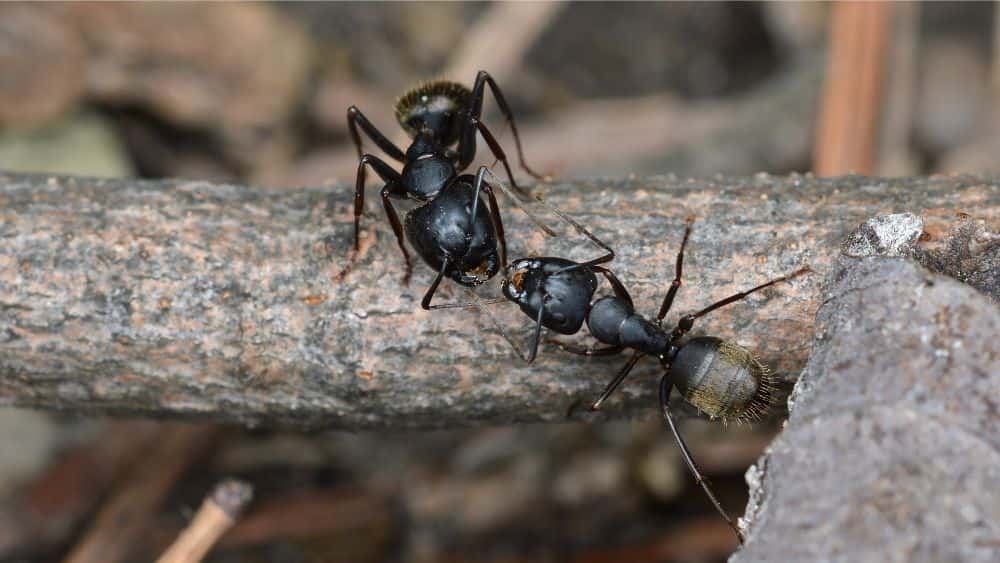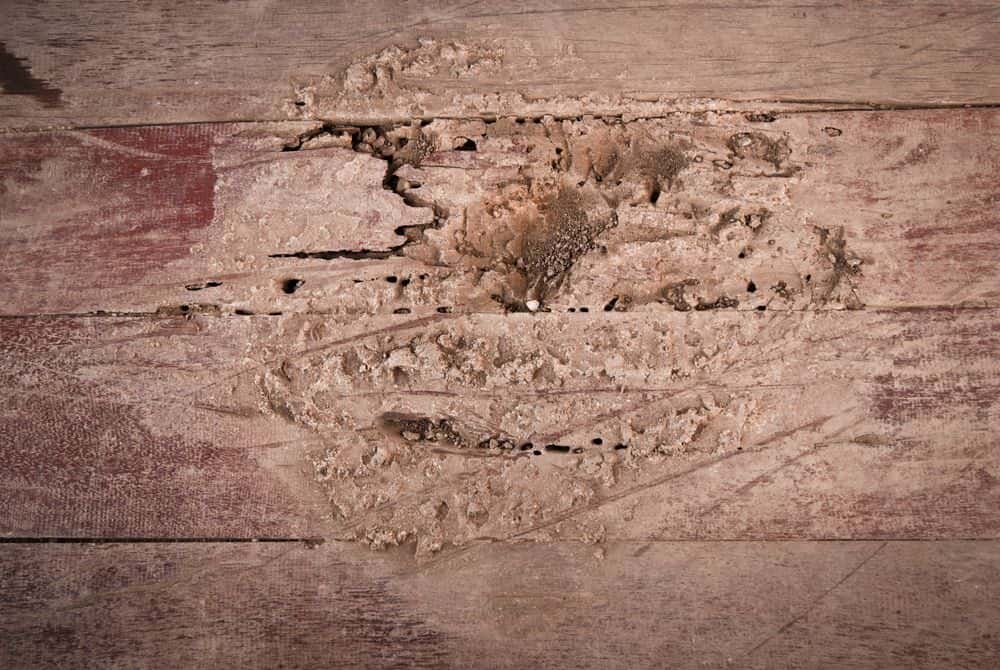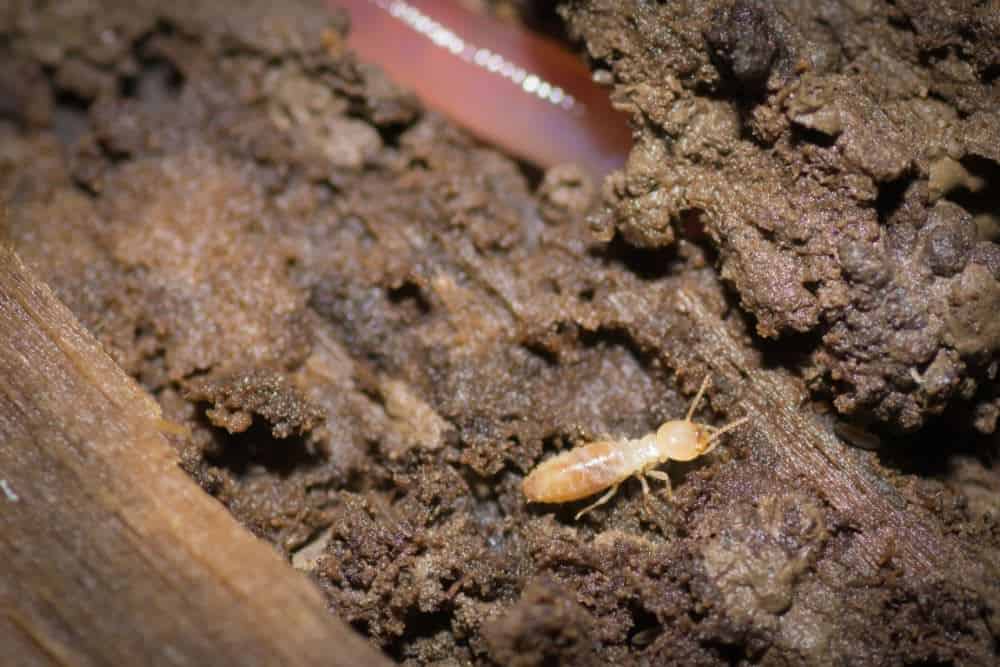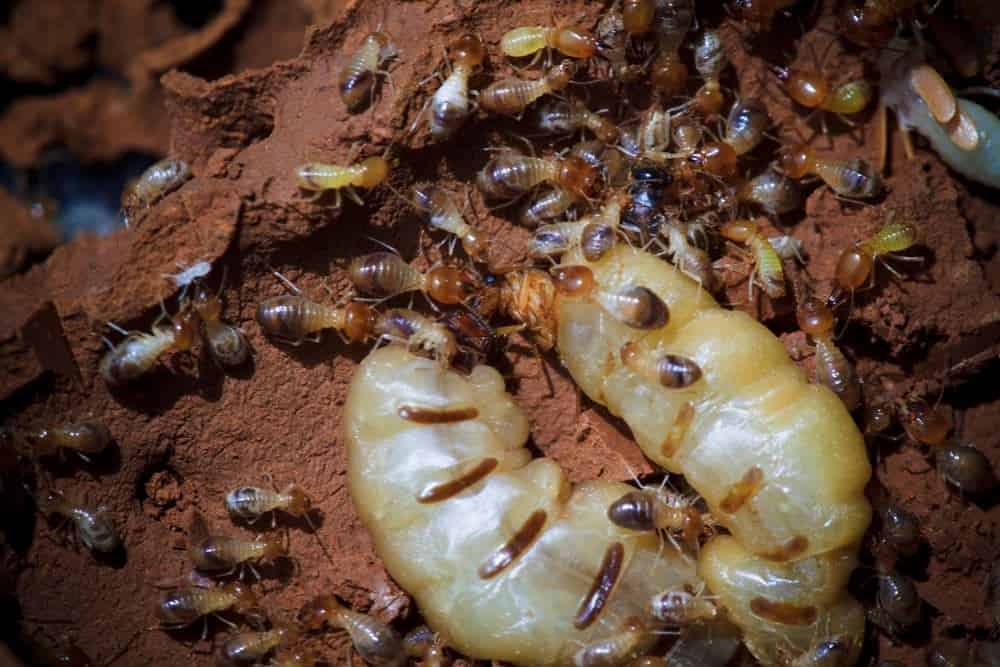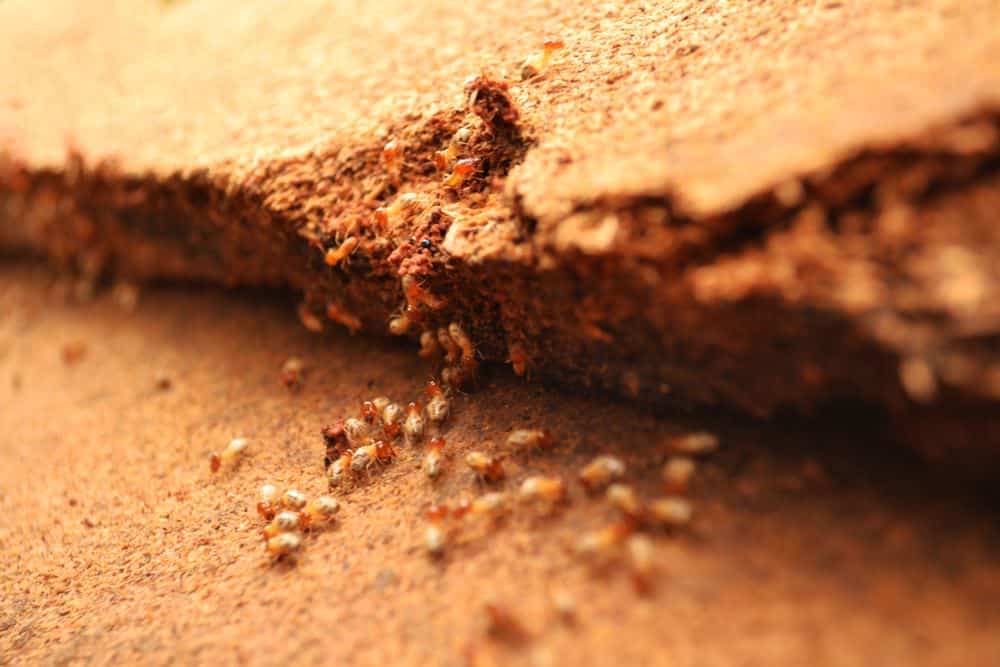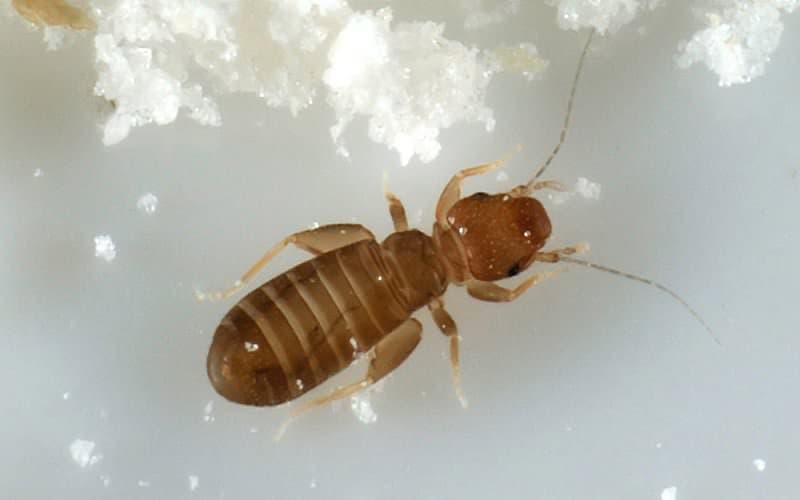Termite Holes
Termites are wood-destroying insects. They look incredibly small and harmless, but their wood-eating activities cost Americans several billion dollars every year. One of the key signs that you have a potentially devastating termite problem is the presence of termite holes.
All termites feed on cellulose. They get this food primarily from dead wood, wooden furniture, and paper. The holes they leave behind are the result of termites eating through the cellulose-based material. In this article, we will discuss how to identify termite holes and how these can be repaired.
What Do Termite Holes Look Like?
Some types of termite, including drywood termites, leave the colony by making exit holes in the wood where the colony is established. They make round holes that are less than one-eighth of an inch in diameter. Only the reproductive, winged termites (known as alates) leave the colony.
The holes they leave behind in the wood are sealed by nymph termites, who also act as workers. They use what is known as termite cement, a mixture of termite droppings and saliva, to create an effective sealant for the holes. Due to this, it can be difficult to spot drywood termite holes, unless you stumble upon them before they are cemented over.
It can take a trained professional to be able to differentiate between termite holes and holes left by other insects who are also known to feed on wood. For example, some types of beetle, as well as carpenter ants, also leave holes in wood.
Despite this, you may have other termite signs such as hollow sounding wood, misshapen furniture, and darkened wood color. These, alongside the holes, will help you identify the attacking culprit accurately.
Can Termite Holes Be Repaired?
The discovery of rotten or damaged is almost every homeowner’s worst nightmare. This is especially true in the case of termite-infested wood, since it is usually discovered after most of the damage has already been done.
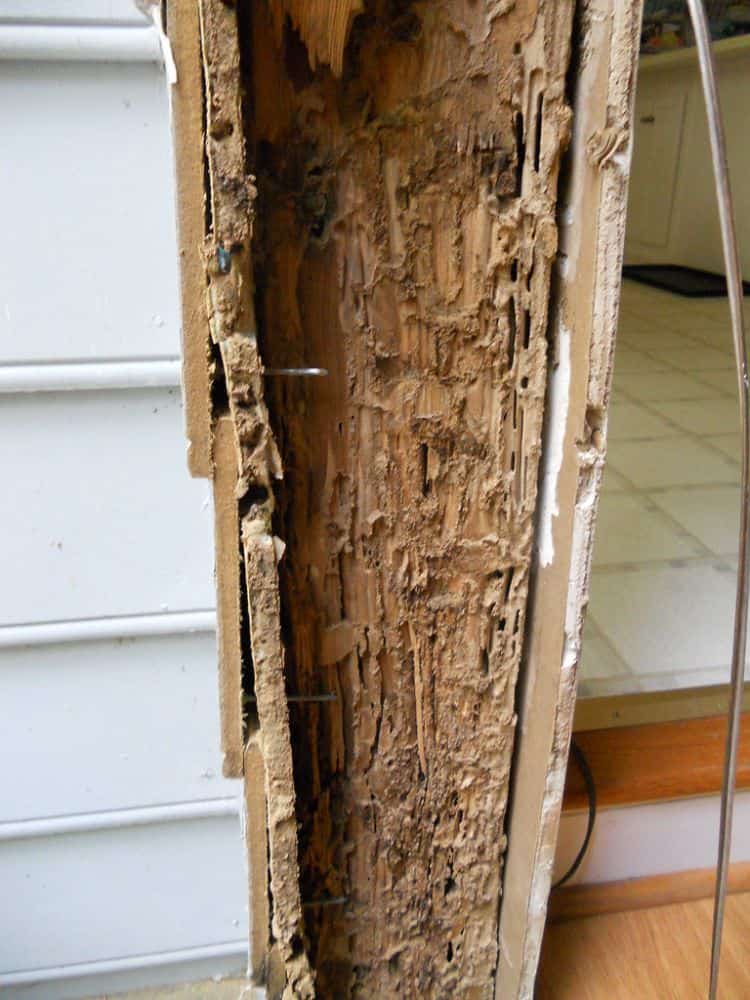
However, it is extremely rare that termites will damage a property beyond repair. This is usually only the case when there have been decades of neglect.
Some of the effects of termite damage can be dealt with using DIY methods at home. In more severe cases, you may require the help of experienced professionals.
It is important to keep a record of any damage or repairs. This may help you claim insurance, if you are covered. Or, when you decide to sell, you may be required by law to reveal any past damage to the property’s structure.
Next, we’ll go over some of the DIY means of fixing termite damage. Then we’ll take a look at what you should do if the damage is beyond home repair.
Some DIY Methods of Dealing With Termite Damage
Wood Hardeners
If the termite holes are not significant and any damage has been caught early on, you can use a wood hardener on the affected area. Firstly, remove any excess rotten wood in or around the holes and then fill the gaps with the hardener. Wait for it to dry fully. After this, simply sand down the surface to make it smooth and even.
Wood Fillers
If the wood has had a colony living inside for some time, there will likely be extensive damage. This can include holes and long, hollowed-out grooves. If this is the case, you will need to use a wood filler. The same steps as above need to be taken for this.
Supporting Beams
Depending on the level of termite damage, you can add a supporting piece of wood next to rotten or dead wood that cannot be repaired. This may restore the structural function of the beams, but may also make their appearance less appealing.
Professional Help and Replacing Damage
While termites can be fast-acting, this also depends on the type of termite and size of the colony. Formosan and subterranean termites live in large colonies and can eat through wood a lot quicker than smaller colonies of drywood termites.
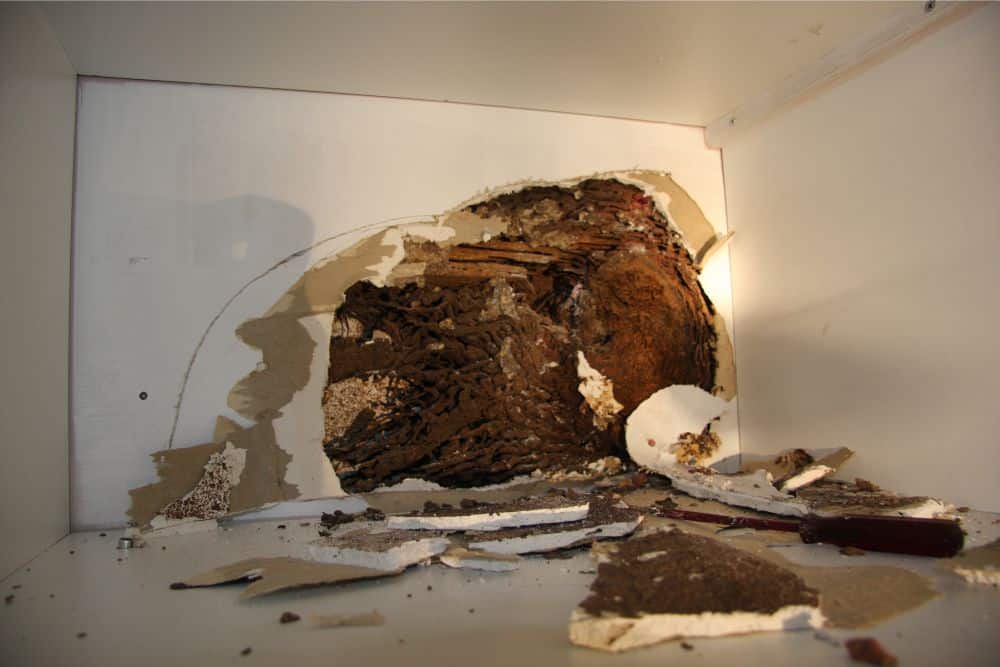
In these cases, the damage can be as excessive and treatment costs can be high, because they move from wood to wood in your home quite speedily.
If this has happened in your home, call for professional help to assess the damage. This is especially true when the foundations or structural elements of the home have been affected by termite holes and other damage.
If the underlying structure is affected, you may need to make complete replacements rather than simple DIY amendments. This is to ensure the safety of your home has not been compromised.
If the worst happens, it is wise to hire a contractor to take charge of any wall and floor replacements needed around your home, rather than attempting to do it yourself.
Alongside these repair and replacement options, you should consider some options to prevent termites from returning.
Preventative Measures
Some simple steps you can take are listed below:
- Prevent the home from getting damp
- Make sure sufficient sunlight gets in
- Treat wooden structures and furniture with insect repellent
- Maintain the garden or greenery around the property and remove any dead trees
Some more long-term and costlier measures can also be taken, such as placing chemical barriers or bait stakes around the property. You can even restructure your home’s foundations to prevent termites from appearing from the ground below the property.
These pests are small but ruthless. They pay no attention to the difference between dead wood in the garden and your homely, wooden kitchen door.
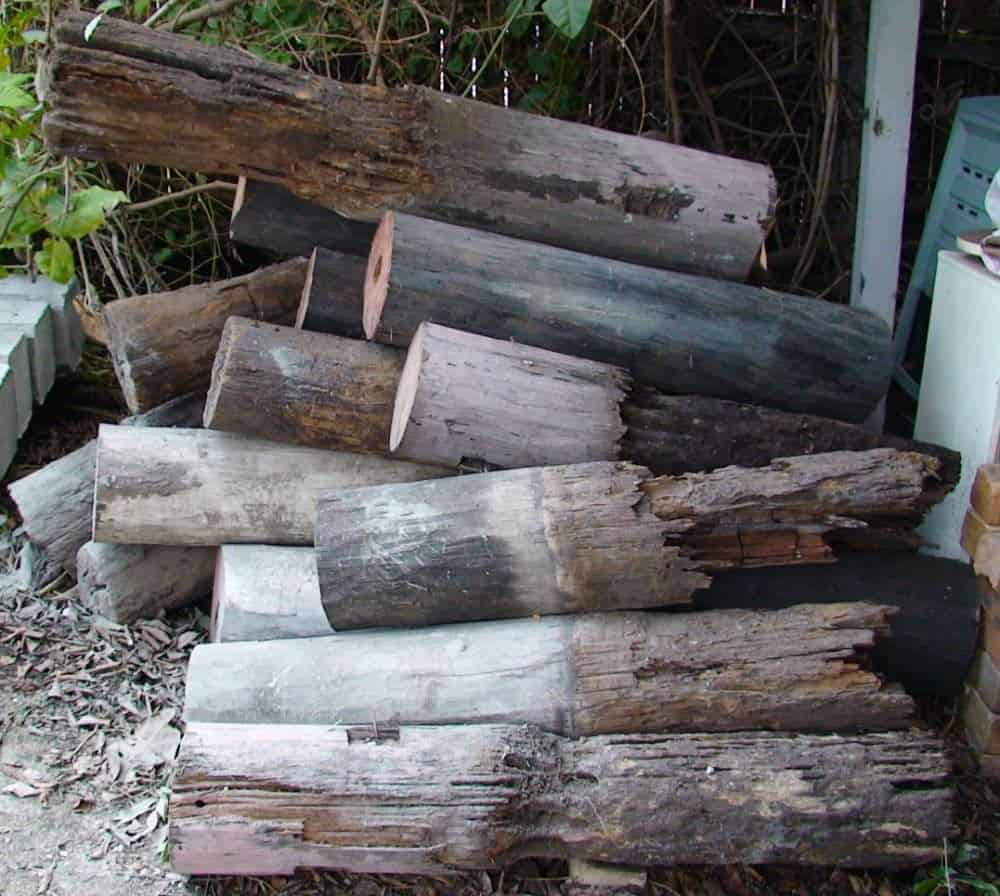
Termites are vital members of the ecosystem. However, this brings little comfort to homeowners who worry that their biggest life investment is crumbling before their eyes.
In some cases, costly measures, such as structural replacements, may need to be taken. However, this can be seen as an opportunity to improve the home and add to its value. In the meantime, long-term measures should be put in place to ensure that the termites do not return.
Fortunately, not all termite-damaged wood needs replacing or costly repairs. Some basic repairs and cosmetic touches can restore wood that has termite holes or other minimal damage. This can usually be completed with little effort and at a low cost.

